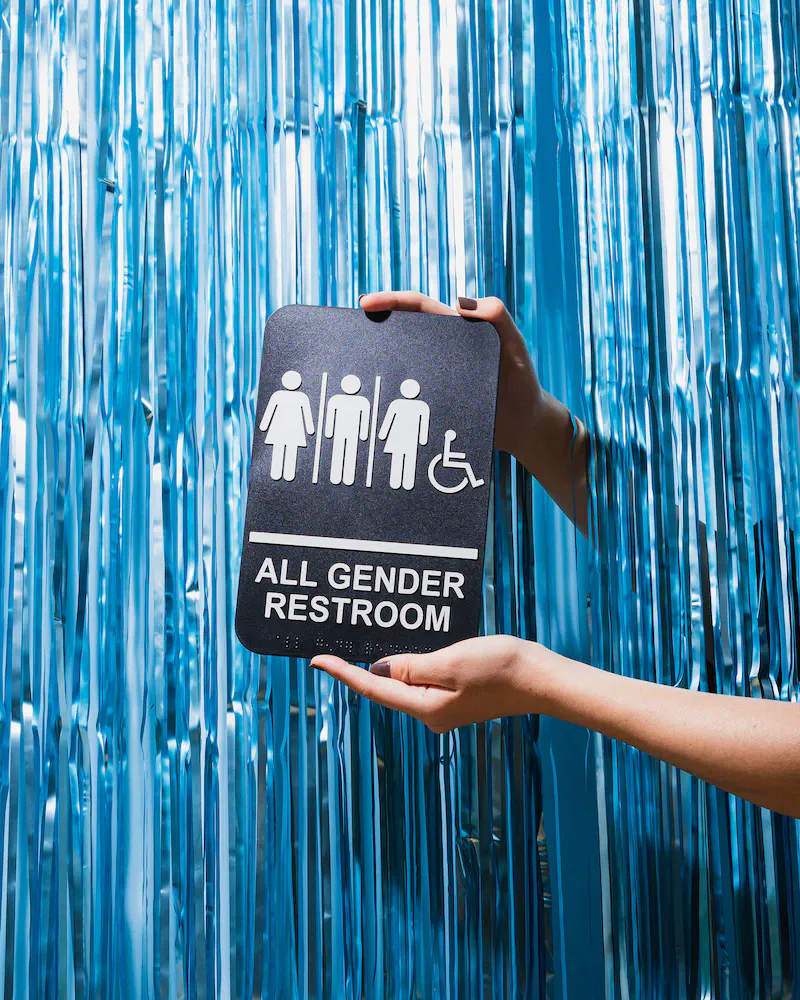Understanding the Spectrum: A Comprehensive Look at Sexual Orientation

Understanding the Spectrum of Sexual Orientation
Sexual orientation is a term used to describe an individual’s emotional, romantic, or sexual attraction to others. While many people are familiar with the terms heterosexual, homosexual, and bisexual, the reality is that sexual orientation exists on a spectrum. In the video script, the speaker discusses the work of Dr. Alfred Kinsey, who in the 1940s conducted research on human sexual behavior and found that individuals do not fall neatly into binary categories of heterosexual or homosexual.
Instead, sexual orientation exists on a continuum, with individuals experiencing varying degrees of attraction to people of the same gender, opposite gender, or both. This spectrum of sexual orientation includes labels such as pansexual, demisexual, asexual, and many more.
It is important to understand that sexual orientation is a personal and individual experience, and there is no right or wrong way to experience attraction. Furthermore, it is crucial to recognize and respect the diversity of sexual orientations, and to create a culture that is accepting and affirming of all individuals regardless of their sexual orientation.
The Importance of Acceptance and Equality for the LGBTQ+ Community
The LGBTQ+ community has been historically marginalized and discriminated against, often facing legal and social barriers that prevent them from fully participating in society. It is crucial to recognize that acceptance and equality are essential for creating a safe and inclusive environment for the LGBTQ+ community.
One significant issue facing the LGBTQ+ community is the lack of legal protections against discrimination. In many places, individuals can still be fired from their jobs or evicted from their homes solely because of their sexual orientation or gender identity. This discrimination can also manifest in healthcare, education, and other public services, creating a hostile environment for LGBTQ+ individuals.
Furthermore, societal attitudes and stigma against the LGBTQ+ community can lead to negative mental health outcomes. LGBTQ+ individuals are at a higher risk for depression, anxiety, and suicidal ideation, and this risk is heightened when they experience discrimination or rejection from their families, peers, or communities.
In conclusion, acceptance and equality are vital for creating a safe and inclusive environment for the LGBTQ+ community. Legal protections against discrimination, along with education and awareness, can help break down societal barriers and create a more supportive environment for LGBTQ+ individuals.
Exploring the Effects of Society on Sexual Identity
Society plays a significant role in shaping our sexual identity. It can influence how we view ourselves and our sexual orientation. Unfortunately, societal attitudes towards LGBTQ+ individuals have not always been positive, which can lead to feelings of shame and rejection among members of this community.
In the video, the speaker explains that society’s expectations of gender roles can also contribute to confusion about one’s sexual identity. For example, traditional gender roles may suggest that men should be attracted to women and vice versa, which can create internal conflict for individuals who do not fit these norms.
Furthermore, the speaker notes that individuals may feel pressured to conform to societal expectations and hide their true sexual orientation. This can cause immense emotional distress and lead to a sense of isolation.
It is essential to recognize the role society plays in shaping our views of sexual identity and to promote acceptance and understanding of LGBTQ+ individuals. By creating a more inclusive society, we can help individuals feel safe and comfortable expressing their true selves without fear of judgment or discrimination.
Kinsey’s Research on Sexual Behavior in the 1940s
Kinsey’s research in the 1940s was groundbreaking in providing insight into human sexual behavior. His studies indicated that sexuality is more fluid than previously believed, with people often falling somewhere along a spectrum rather than simply being straight or gay. He also found that a significant portion of the population had engaged in sexual behaviors that were considered taboo at the time, such as premarital sex and same-sex experiences.
Kinsey’s research sparked controversy at the time, but it ultimately helped to shift societal views on sexuality and paved the way for further research in the field. It also challenged the notion that there was a single “normal” sexual behavior and helped to promote acceptance of different sexual orientations and behaviors.
Today, Kinsey’s research is still referenced in discussions on sexual orientation and behavior. While some of his methods have been criticized and updated research has provided more nuanced findings, his work remains a significant contribution to the field of human sexuality.
The Struggle for LGBTQ+ Rights and Representation in Politics
The LGBTQ+ community has faced many struggles throughout history, including discrimination and lack of representation in politics. However, progress has been made in recent years. In 2015, the United States Supreme Court ruled in favor of same-sex marriage, a landmark decision for LGBTQ+ rights.
Despite this progress, there are still many challenges that the LGBTQ+ community faces in politics. In many countries, laws exist that criminalize same-sex relationships, and LGBTQ+ individuals are often denied the right to marry or adopt children. Additionally, LGBTQ+ individuals often face discrimination in the workplace and in other areas of life.
Representation in politics is also a significant issue for the LGBTQ+ community. Historically, LGBTQ+ individuals have been underrepresented in politics, and many have faced discrimination and barriers to entry. However, in recent years, more and more LGBTQ+ individuals have been elected to political office, bringing their unique perspectives and experiences to the table.
The struggle for LGBTQ+ rights and representation in politics is ongoing, but progress has been made, and there is hope for a more equal future.
Homophobia and Discrimination in Society Today
Despite the progress made towards LGBTQ+ rights, discrimination and homophobia still exist in society today. This can take many forms, including hate crimes, bullying, and employment discrimination. According to the speaker, many people still hold negative attitudes towards the LGBTQ+ community due to a lack of understanding or exposure to diverse perspectives.
The speaker notes that the media has played a role in perpetuating harmful stereotypes and negative portrayals of LGBTQ+ individuals, which can contribute to societal prejudice. Additionally, some religious beliefs and conservative ideologies may lead to homophobia and discriminatory practices.
It is important to continue to raise awareness about the harms of discrimination and work towards creating more inclusive environments for the LGBTQ+ community. This includes advocating for legal protections and policies that promote equality, as well as supporting LGBTQ+ individuals in our personal lives and communities. The speaker emphasizes the importance of allyship and standing up against discrimination and hate towards marginalized groups.
Despite the challenges that remain, the speaker remains optimistic about the progress that has been made and the potential for positive change in the future.
The Role of Psychology in Understanding and Accepting Different Sexual Orientations
Psychology plays a crucial role in understanding and accepting different sexual orientations. In the past, homosexuality was considered a mental disorder, and many people were subjected to harmful conversion therapies. However, modern psychology recognizes that homosexuality and other sexual orientations are a natural and healthy aspect of human diversity.
One important concept in psychology is the idea of “heteronormativity,” which refers to the assumption that heterosexuality is the norm and all other sexual orientations are abnormal. Heteronormativity can lead to discrimination and prejudice against people who identify as LGBTQ+.
Psychologists also study the experiences of people who identify as LGBTQ+ and the impact of discrimination and stigma on their mental health. For example, research has shown that LGBTQ+ individuals are more likely to experience anxiety, depression, and substance abuse due to the stress of facing discrimination and social exclusion.
Fortunately, psychology also provides solutions to help individuals and society accept and support LGBTQ+ individuals. Therapy can help people come to terms with their sexual orientation and develop strategies to cope with discrimination and stigma. Additionally, education and awareness campaigns can help reduce heteronormativity and increase acceptance of LGBTQ+ individuals in society.
Overall, psychology plays a critical role in helping us understand and accept different sexual orientations. By recognizing the diversity of human sexuality and working to reduce discrimination and stigma, we can create a more inclusive and accepting society for all individuals.
Moving towards a Non-Homophobic Society: The Need for Acceptance and Understanding
As society continues to evolve and become more accepting, it’s crucial to move towards a non-homophobic society. One of the key ways to achieve this is through education and understanding. It’s important for people to learn about different sexual orientations and understand that they are natural and valid.
To achieve a non-homophobic society, it’s also essential to recognize the impact that discrimination and homophobia have on individuals. Discrimination can have severe consequences for mental health, including increased rates of depression, anxiety, and suicide. It can also have physical health consequences, such as higher rates of cardiovascular disease and other health conditions.
Individuals and communities can help move towards a non-homophobic society by actively promoting acceptance and understanding. This can include being open to learning about different sexual orientations, supporting LGBTQ+ individuals and organizations, and advocating for equal rights and representation.
Furthermore, mental health professionals can play an important role in helping individuals and society as a whole move towards greater acceptance and understanding. By providing support and resources for LGBTQ+ individuals, therapists and counselors can help reduce the harmful effects of discrimination and promote mental health and wellbeing.
Ultimately, a non-homophobic society requires a collective effort from individuals, communities, and institutions. By working together to promote acceptance and understanding, we can create a more inclusive and compassionate world for all.
Conclusion
The journey towards understanding and accepting different sexual orientations has been a long and challenging one. From the groundbreaking research of Alfred Kinsey to the struggles for LGBTQ+ rights and representation in politics, society has come a long way in recognizing and supporting the LGBTQ+ community. However, there is still much work to be done to create a non-homophobic society that values and respects all individuals, regardless of their sexual orientation.
It is important to remember that sexual orientation is a natural and complex aspect of human identity that cannot be changed or chosen. Acceptance and equality are crucial for the mental health and well-being of the LGBTQ+ community, as discrimination and homophobia can lead to feelings of isolation, depression, and anxiety.
Psychology plays a crucial role in understanding and accepting different sexual orientations, as it allows us to explore the biological, environmental, and social factors that contribute to the development of sexual identity. It also provides us with tools and strategies to combat homophobia and discrimination and create a more inclusive and accepting society.
As individuals, we can all do our part in moving towards a non-homophobic society by educating ourselves on the spectrum of sexual orientation, being open-minded and accepting of others, and speaking out against discrimination and homophobia. By working together, we can create a world where everyone feels valued and respected, regardless of their sexual orientation.




